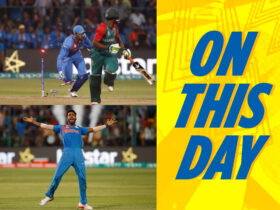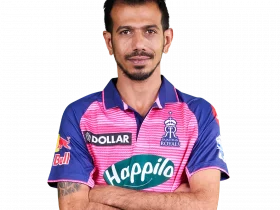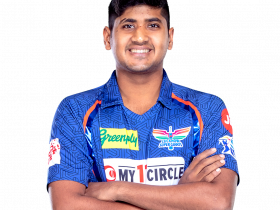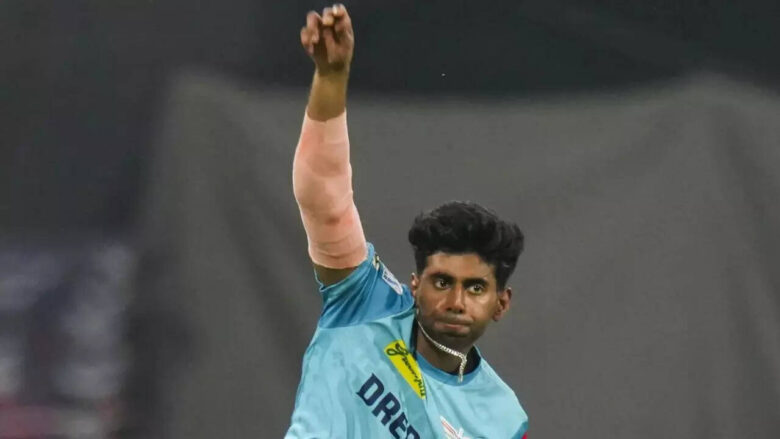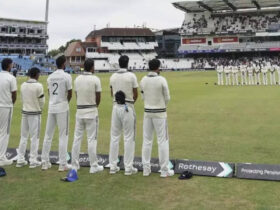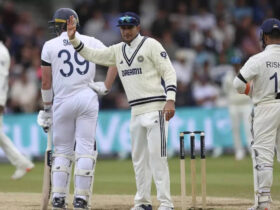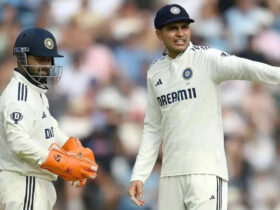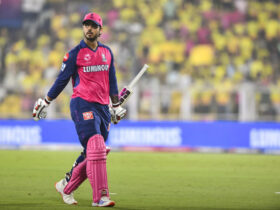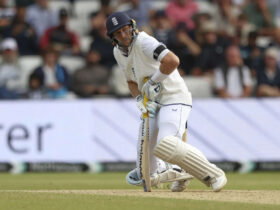Inside Story: The Troubling Breakdown of Mayank Yadav—What Went Wrong?
Welcome to an in-depth exploration of a story that has gripped the cricketing world. Mayank Yadav, the prodigious pace sensation of Lucknow Super Giants (LSG), was expected to set the IPL on fire with his raw speed. However, his journey took a heartbreaking turn as injuries once again derailed his campaign. Let’s unravel the layers behind his latest breakdown and ask the tough questions: Was it haste, systemic failure, or sheer bad luck?
When Mayank joined LSG on April 16, 2023, there was palpable excitement among fans and analysts alike. Known for consistently breaching the 150 kmph mark, the young speedster was returning after a prolonged injury layoff. LSG, however, adopted a cautious approach, delaying his return to the playing XI. His first match came on April 27 against Mumbai Indians, where he managed figures of 2/40. But the joy was short-lived. In his second game against Punjab Kings, a disappointing 0/60 hinted at deeper issues. Alarmingly, his pace had dropped to the 140 kmph range, and he relied heavily on variations like slower balls and cutters—a far cry from the fiery bowler who had taken the cricketing world by storm.
So, what led to this dramatic dip in form and fitness? Sources close to the situation suggest a combination of factors, with fingers pointing at both the Board of Control for Cricket in India (BCCI)’s Centre of Excellence (CoE) and LSG’s potential desperation to field their Rs 11 crore retention. A well-placed insider revealed that Mayank was rushed back into competitive cricket far too soon. His rehabilitation, initially overseen by former head of sports science Nitin Patel, was later handed to Dhananjay Kaushik, the lead physiotherapist at CoE, after Patel’s departure on March 31, 2023. Shockingly, Mayank had only 10-12 bowling sessions before receiving the Return-To-Play clearance, with a third of those sessions at reduced intensity.
A source told us, “For a bowler with such a long absence, it’s astonishing that the CoE deemed him fit after just a handful of sessions. He only started bowling at 80-85% intensity towards late March. True recovery can only be assessed at full tilt over an extended period to monitor how the body responds to workload. With Mayank, it felt like checkboxes were simply ticked.” Adding to the concerns, when Mayank joined the LSG camp, there were visible traces of swelling in his back, and extensive taping was required to prevent cramping—a common issue for fast bowlers returning from long breaks.
Another critical aspect is Mayank’s bowling action, which remains unaddressed. Experts and insiders have noted that his body falls awkwardly to the side after landing, placing immense stress on his back. “It’s like a car speeding at 150 kmph and taking a sharp left turn,” a source explained. “His pace is a gift, driven by the hyperextension of his bowling arm’s elbow, but without correcting his action and a robust rehabilitation plan free from external pressures—be it from the franchise or state team—he risks further breakdowns.”
Within the LSG camp, frustration grew as discussions revealed a lack of trust in Mayank’s recovery process. A recent meeting with the management highlighted concerns over his dip in pace and limited workload on non-match days. Mayank reportedly defended his efforts, citing adherence to the rehab routine prescribed by the CoE, but the timing of these discussions coincided with whispers of his potential release. “The decision and tone during the meeting made it clear that LSG has lost faith in retaining him for the next edition,” a source close to the developments shared.
Let’s not forget the bigger picture: Mayank isn’t just any bowler. He is among the rare Indian talents to consistently hit 150 kmph, a feat that earned him a spot on the selectors’ radar and a coveted BCCI fast-bowling contract. His recurring injuries, however, raise serious questions about the CoE’s handling of his rehabilitation. While the franchise’s role is secondary, the onus lies with the BCCI to safeguard the health and future of such a rare talent. Historical data shows that fast bowlers globally, like Pakistan’s Shoaib Akhtar or Australia’s Brett Lee, often faced career-threatening injuries when not managed with precision—something Indian cricket must learn from.
In conclusion, the saga of Mayank Yadav is a stark reminder of the delicate balance between talent and care in the high-stakes world of cricket. Was it the CoE’s oversight, LSG’s impatience, or an inherent flaw in his action that led to this breakdown? As fans, we can only hope that the powers that be prioritize his long-term well-being over short-term gains. The potential of a bowler who can clock 155 kmph—a speed he hit during his debut IPL season in 2022—is too precious to squander. Let’s advocate for a recovery plan that truly rebuilds this pace prodigy into the world-beater he promises to be. What are your thoughts—how can Indian cricket better protect its speed sensations?


